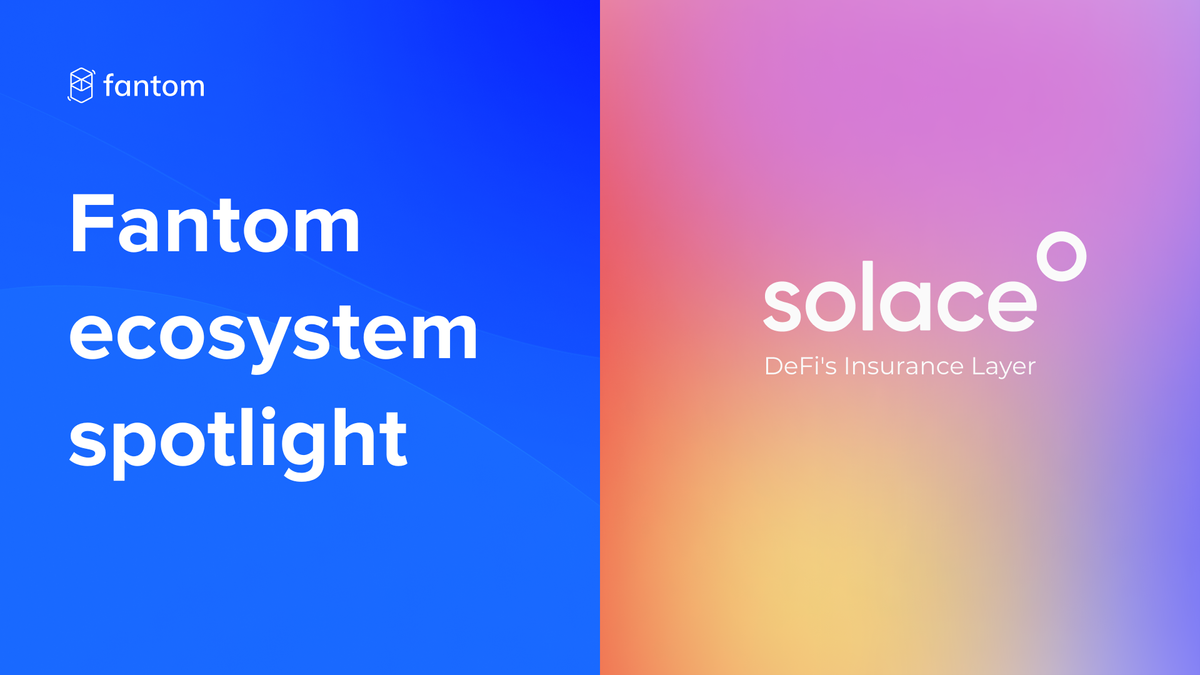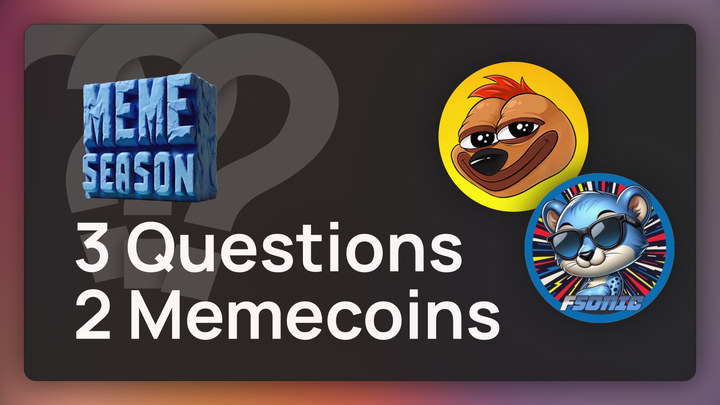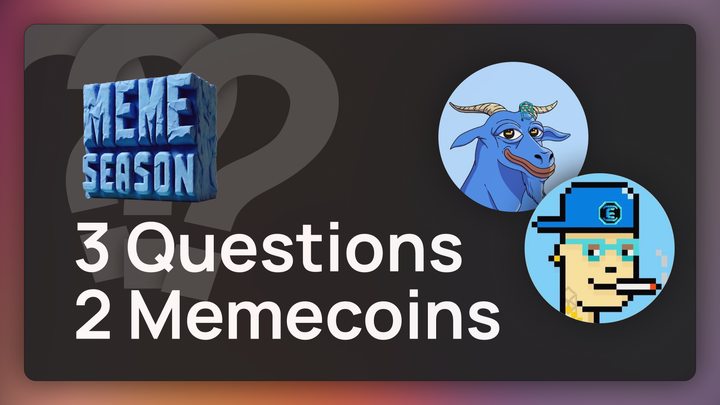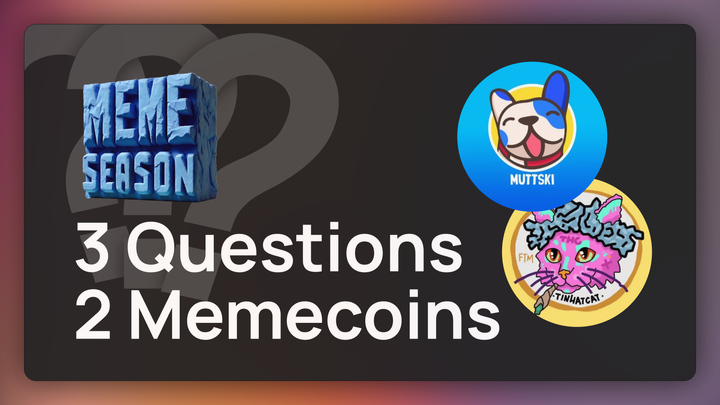Fantom Ecosystem Spotlight – Solace

In the history of commerce over the millennia, insurance has played a vital role in mitigating loss, stimulating commercial activity, and promoting sustainable economic growth. Therefore, the growth of insurance services in DeFi signals maturation in the space.
But as in TradFi, not all providers are created equal. The DeFi insurance protocol Solace, which integrated Fantom in June 2022, distinguishes itself with its unique, scalable offerings accompanied by transparent risk data, risk models, and pricing.
1. What is Solace?
The challenge ahead for the DeFi ecosystem is to gain trust and onboard more people. In this context, Solace’s key objective is to achieve mass adoption of DeFi by increasing users' levels of security and trust globally.
Solace builds products that help all participants reduce risk and benefit from the new financial system.
Solace is a DeFi insurance protocol that covers users against smart contract risk. Solace products are designed to build user trust, maximize capital efficiency, and offer complete transparency into the protocol.
Solace has two key products:
- Solace Portfolio Insurance (SPI) — This personalized insurance policy covers portfolios across four chains and 220 dApps.
- Solace Native — DeFi’s base layer of insurance. Native is dApp-level insurance, and the underwriting is powered by participating dApps, DAOs, and protocols.
2. How do you introduce Solace to a DeFi/crypto novice?
Insurance is a concept that everyone understands is needed to mitigate risk in all sustainable financial ecosystems: Solace is the insurance layer for DeFi.
3. How did you come up with Solace, and what inspired you?
Solace’s founder, Nikita Buzov, wanted to get coverage for his funds during the 2020 DeFi summer. However, he didn’t find any good solutions that were trustworthy, efficient, or transparent.
All sustainable financial ecosystems need insurance to scale properly. When he saw how little capital was insured relative to DeFi’s TVL, it became evident to Buzov that he wasn’t the only one who was unhappy with current solutions.
Deciding to focus on building the solution to the DeFi insurance problem, Buzov left his Ph.D. program at UC-Santa Barbara and began building. Over time, Buzov assembled a team of talented builders and developed Solace, which launched in October 2021.
4. What makes Solace different from other crypto insurance providers?
To date, major issues with DeFi insurance have hindered the evolution of an accessible and efficient insurance layer for the industry. Solace’s innovative solutions to these challenges differentiate us from other DeFi insurance providers.
- Underwriting: It’s hard to raise underwriting capital for a few reasons. For one, DeFi insurance dApps cannot produce the same returns as other DeFi dApps touting double and triple-digit APRs.The second reason is that underwriting investments have the risk of being spent to pay out claims, which can result in the total loss of user investments. The risk-to-reward ratio is much higher than the average dApp in DeFi.Instead, we implemented two systems to mitigate the underwriter problem. The first is that dApps, DAOs, and protocols underwrite themselves via our native pool. Therefore, these organizations can directly take advantage of the shared capital pool.Further, Solace utilizes the Olympus Pro model, where users can exchange whitelisted tokens for $SOLACE. The exchanged tokens are then stored in a Solace protocol-owned underwriting pool.
- User experience: Most DeFi users have more than one position, most prefer not to do KYC, and most, if not all, don’t want to fill out a claim form and wait for two weeks.So we’ve built a single portfolio policy that covers all of your positions in your wallet with one coverage. Connect your wallet, set up a coverage limit, and that’s it — you are covered.We charge a weekly premium based on what we see in your portfolio; this way, you’re never overpaying for the protection. We also address proactive claims within a week, so you don’t need to worry about the claim process and spend your time on it.
- Transparent Risk Assessment: Assessing the risk is the greatest challenge for any new industry. But it’s unfair to price the risk based on any type of voting or staking.Based on quantitative and qualitative modeling, our approach is leading-edge, transparent, and safe.
5 How do bonding and $SOLACE staking work?
$SOLACE is a tool to raise the underwriting capital, share therevenue with the community, and govern the protocol. You can buy $SOLACE either on the open market or through bonds.
Bonding is the mechanism to exchange various assets for discounted $SOLACE. Received assets are used as the underwriting capital to sell insurance policies.
You can use the $SOLACE you hold to earn yield from the protocol’s activities and token distribution. Solace uses ve-tokenomics, which means you can lock your tokens and multiply your reward.
Bonding and staking are available on Fantom, Ethereum, Aurora, and Polygon.
6. What are the team members’ backgrounds?
The Founder of Solace, Nikita Buzov, has a highly technical background with over four years of crypto and DeFi experience: BTC, ETH mining, running PoS validators, managing liquidity in DeFi, and coding smart contracts.
He honed his engineering expertise over five years of research experience focused on Machine Learning processors and semiconductors.
He holds a B.S. from the University of Illinois Urbana-Champaign and an M.S. from the University of California Santa Barbara, where he also began a Ph.D. but dropped out to found the Solace protocol.
Nikita was previously the president of the Blockchain student organization at UCSB. He is currently a board member of the Blockchain Acceleration Foundation, a 501(c)(3) nonprofit dedicated to starting accredited blockchain courses at universities and connecting talent to projects in the web3 industry. This involvement in blockchain and crypto communities gives Solace a key advantage in building a broad and engaged user base.
Nikita is an expert in computer architecture, which gives Solace team further leverage in developing efficient and secure code running on-chain.
Alongside, we have a team of professionals with experience across various fields like risk modeling, computer science, product development, communications, and management.
7. How did you learn about Fantom?
We’ve been in crypto for a while. It was easy to find and learn about such a prominent project. We value technology, so we always follow projects like Fantom to stay informed.
8. Why did you decide to integrate Fantom?
The DeFi ecosystem on Fantom is robust. Constant innovation and a wide array of tools enhance the user experience.
We share with Fantom a commitment to growth and a vision of making DeFi accessible to all ‒ Solace and Fantom are a perfect match.
9. How did the Fantom community receive Solace?
The Fantom community is excellent, and we appreciate the love they’ve shown us!
The community is welcoming and incredibly supportive of anyone dedicated to building innovative and useful products.
We are incredibly excited to continue working on Fantom and drawing from the enthusiasm for our vision.
10. What’s coming up for Solace? Free alpha!
Soon, Solace will announce the first cohort of protocols and partners joining Solace Native. These announcements will mark a massive step toward our ultimate goal to help build a DeFi industry that is growing, safe, and accessible.
11. What is the future of DeFi?
The future of DeFi is nothing less than a new global financial system built on a decentralized and transparent infrastructure.
TradFi never had a global "back-end" and focused primarily on building products within their ecosystems (e.g., jurisdictions, countries, etc.). Interoperability was pursued in response to the increasing interconnectedness of world economies over the 20th century.
Now DeFi is leading the way in establishing that back-end for the world of finance to connect and operate in. Therefore, we'll see existing financial functions finding their way into DeFi and many new and different tools that will radically improve established, outdated processes.
The Solace mission is to help sustain this new world of DeFi that offers universally accessible and equal financial opportunity.
Engage with Solace:
Website | Documentation | Medium | Twitter | Discord | Github



